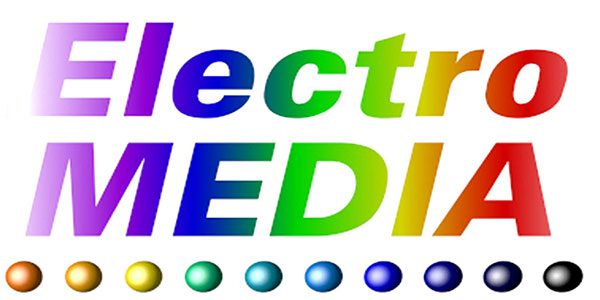Lighting up the Game: Stadium Perimeter LED Display Innovations
Importance of LED Technology in Sports Arenas
LED technology is changing the landscape of sports arenas with its superior visibility, dynamic content display, and revenue generation capabilities through advertising.
Its flexibility enables customization for various events, while its energy efficiency ensures sustainable operations. Interactive features and real-time updates engage fans, fostering a sense of community and excitement.
The clarity and brightness of the stadium perimeter LED display guarantee optimal viewing conditions, enhancing the spectator experience regardless of lighting. With its ability to create immersive experiences and drive revenue, LED technology is a crucial element in modern sports entertainment, shaping the future of stadium experiences worldwide.
Evolution of LED Displays in Sports
The progress of LED displays in sports has been extraordinary, revolutionizing the manner in which fans engage with live events. Originally utilized for simple scoreboard purposes, LED displays have progressed into high-definition, dynamic screens that can exhibit live action, replays, and interactive content.
Enhancements in LED technology have resulted in enhanced brightness, resolution, and energy efficiency, improving visibility and decreasing operational expenses for sports venues. Additionally, LED displays have become essential for advertising, providing targeted messaging and revenue prospects.
Historical Background
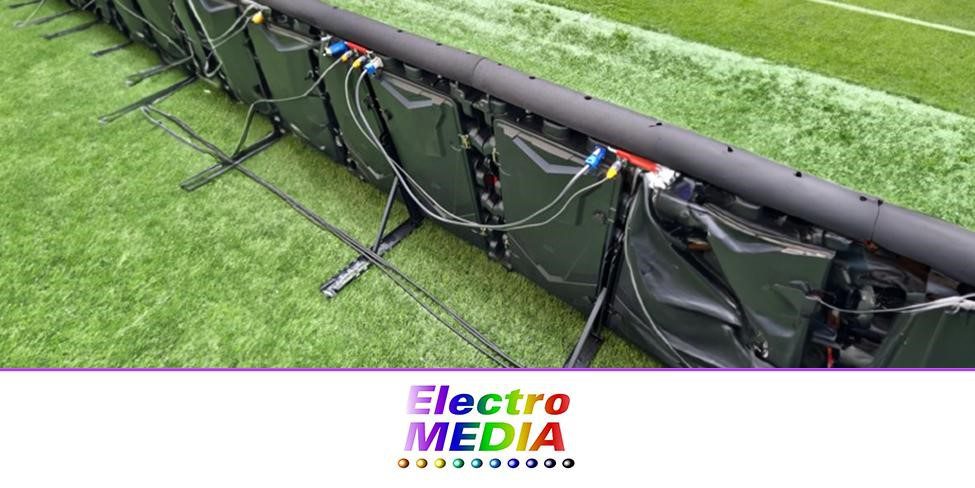
LED displays in sports have a rich history, starting as simple scoreboards in the late 20th century. Advancements in brightness and graphics occurred in the 1990s, while the 2000s and 2010s saw rapid progress in LED technology. This led to the introduction of high-definition screens and larger displays that now cover stadium perimeters.
Today, LED displays are crucial in sports venues, providing live action, replays, and interactive content to enhance the fan experience. This evolution has revolutionized sports entertainment by offering clearer images, dynamic visuals, and valuable advertising opportunities, establishing LED displays as a key component of the industry.
Advancements in Stadium Perimeter LED Display
Advances in LED display tech have revolutionized visual experiences with better resolution, brightness, and flexibility. Finer pixel pitches create sharper images and seamless video playback, while upgraded materials ensure vivid colors and superior contrast in well-lit environments. Breakthroughs in chip design expand the color spectrum for precise and vibrant replication.
Energy-efficient designs reduce power usage, and modular systems provide adaptability and personalization. Integration with sensors and software enhances functionality and engagement, driving adoption in various industries. Ongoing innovation promises even more improvements, shaping the future of visual communication.
Design and Installation Considerations
Proper design and installation are crucial for successful LED display implementation. Factors like viewing angles, pixel density, and display size must align with venue requirements and audience visibility.
Environmental factors, installation logistics, and compliance with regulations are also important for durability and efficiency. Seamless integration of content management systems and control interfaces is vital for optimal operation. By addressing these considerations, smooth deployment of LED displays can be achieved.
Customization Options
Stadium perimeter LED display is versatile and customizable, fitting any space, from small stores to large stadiums. They come in various shapes and sizes, with adjustable resolution and pixel pitch for optimal image quality. Brightness levels can be customized for different lighting conditions, ensuring visibility and vibrancy.
Color calibration ensures accurate and vivid display of images and videos. LED displays can be integrated with content management systems for dynamic and interactive content, allowing businesses to easily update and schedule content. They offer endless possibilities for creativity and engagement, displaying advertisements, announcements, and interactive games.
Installation Challenges and Solutions
The installation of LED displays involves various obstacles, including structural, power supply, and environmental concerns. The structure must support the weight and wind loads, often requiring customized mounting solutions. Efficient power distribution is crucial to avoid circuit overload.
Weatherproofing and climate control measures are necessary to protect against temperature, humidity, and exposure. Collaboration between installers, engineers, and electricians is essential to meet safety regulations and industry standards.
Enhancing Fans Experience
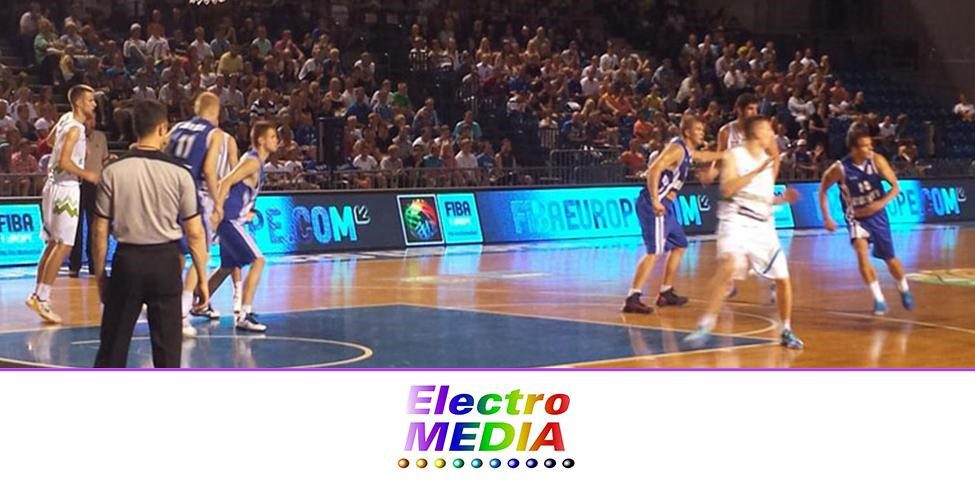
Improving the fans’ experience with LED displays requires utilizing technology to establish captivating and immersive environments. High-resolution screens provide clear visibility from all perspectives, so spectators can fully enjoy the action.
Dynamic content like live feeds, instant replays, and interactive polls helps maintain fans engagement and excitement during the event. Personalized messages and real-time updates foster a sense of connection and participation, while integrated advertising enhances the overall atmosphere.
Immersive Visuals and Dynamic Content
LED displays with immersive visuals and dynamic content are essential components in enhancing the fan experience. High-definition screens provide vivid colors and clear imagery, creating an engaging atmosphere in sports venues.
Real-time statistics, live action, and instant replays bring excitement to the game, keeping fans interested throughout the event. Interactive elements like fan polls, social media integration, and interactive games further enhance the experience, allowing spectators to actively participate.
Interactivity and Engagement Features
LED displays have revolutionized live events by providing interactive games, quizzes, and polls, engaging fans in a whole new way. These displays keep fans entertained and involved during breaks in the action, allowing them to compete against each other or the players themselves. Quizzes and polls test fans’ knowledge and encourage engagement and sharing of opinions.
Social media integration allows for instant sharing and community engagement, while touchscreens and mobile apps provide personalized interactions and convenience. Overall, LED displays have greatly enhanced the fan experience at live events.
Advertising and Revenue Generation
LED displays in sports arenas provide a profitable avenue for revenue generation through advertising. These screens offer excellent visibility and dynamic features, making them ideal for brands to promote their products and services to a dedicated audience of sports enthusiasts. Targeted advertising helps reach specific demographics, ensuring campaigns are highly effective.
Additionally, sponsorship integration allows brands to associate themselves with the thrill and enthusiasm of live sports, boosting brand awareness and loyalty. Revenue streams are diversified through different advertising formats, such as traditional commercials, branded content, and interactive promotions.
Opportunities for Advertisers
Stadium perimeter LED display offer advertisers unique opportunities to engage with a captivated audience. These high-visibility screens ensure that ads are seen by all spectators, showcasing dynamic content like video ads and interactive promotions to capture fans’ attention.
Advertisers can tailor messages based on demographics, time, or specific events through targeted advertising options, with the flexibility to adjust campaigns in real time. Brand elements can be incorporated to enhance brand recognition and association with live sports excitement. Revenue-sharing agreements and data analytics enhance the value proposition for advertisers.
Sponsorship Integration and Partnerships
Sponsorship integration with LED displays in sports arenas offers brands great visibility and engagement. These displays showcase sponsors’ logos, messages, and promotions to a captivated audience, increasing brand exposure through broadcasts and social media. Personalized sponsorship packages include signage, digital ads, and branded content, generating revenue for venue operations. Interactive activations and experiential marketing on LED displays strengthen fan connections with sponsors, building brand loyalty. Data analytics provide insights into sponsor activations and fan engagement, informing future marketing strategies.
Technical Specifications
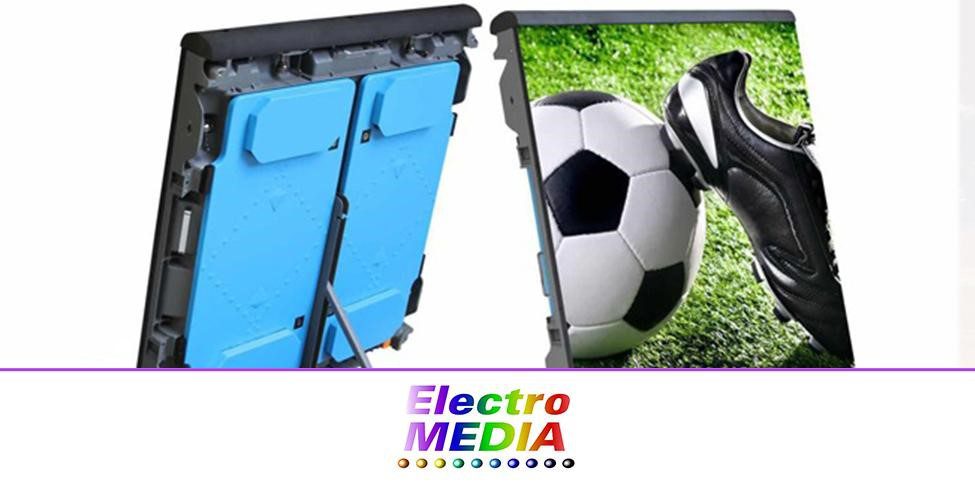
LED displays in sports arenas must meet specific technical specifications. These include pixel pitch for image clarity, brightness, and contrast ratio for visibility in different lighting conditions, the refresh rate for smooth motion, color calibration for accurate color reproduction, modularity for easy assembly and maintenance, weather resistance for durability, control system compatibility for seamless operation, and energy efficiency for cost-effective performance.
These specifications help select LED displays that meet the venue’s requirements for visual quality, reliability, and operational efficiency. Adhering to these specifications enhances the fan experience and maximizes advertising and sponsorship opportunities.
Display Resolution and Pixel Pitch
Display resolution and pixel pitch play a vital role in LED displays used in sports arenas. The display resolution indicates the total number of pixels that make up the image, affecting the level of detail and clarity. Popular resolutions such as HD (1920×1080 pixels) and 4K (3840×2160 pixels) provide superior visual fidelity.
On the other hand, pixel pitch refers to the distance between individual pixels, typically measured in millimeters. Smaller pixel pitches result in higher pixel density, making them suitable for closer viewing distances and enhancing image detail. Conversely, larger pixel pitches are more suitable for displays that will be viewed from a greater distance.
Connectivity and Control Systems
LED displays in sports arenas rely heavily on connectivity and control systems to ensure smooth operation and effective content management. Various connectivity interfaces, including HDMI, DVI, VGA, and Ethernet, allow seamless integration with multimedia sources and network infrastructure.
Control systems consist of both software platforms and hardware controllers, enabling remote monitoring, content updates, and real-time adjustments. These systems offer a range of tools for content creation, scheduling, and playlist management, guaranteeing the delivery of dynamic and captivating display content.
Impact on Fan Engagement and Sponsor ROI
Stadium perimeter LED display have a profound influence on fan engagement and sponsor return on investment (ROI) within sports arenas. These displays enthrall spectators with their dynamic content and interactive features, fostering a stronger bond with the game. Sponsors reap the rewards of heightened visibility and brand recognition through strategically positioned advertisements on LED screens.
By utilizing measurable metrics and data analytics, sponsors can assess the efficacy of their campaigns and optimize their ROI. The revenue generated from LED display sponsorships not only sustains venue operations but also elevates the overall fan experience.
Future Trends and Innovations
LED displays in sports arenas are set to undergo significant advancements in the future, including HDR technology for lifelike visuals and AR integration for interactive experiences. Flexible displays will offer unique viewing angles, while data analytics and AI-driven insights will personalize content for spectators.
Sustainability initiatives will prioritize eco-friendly designs, and gesture-controlled interfaces and 5G integration will enhance connectivity. These innovations have the potential to revolutionize the fan experience, maximizing engagement and revenue opportunities for sports arenas and sponsors. The future of LED displays in sports arenas promises a new level of excitement and entertainment for fans.
Emerging Technologies
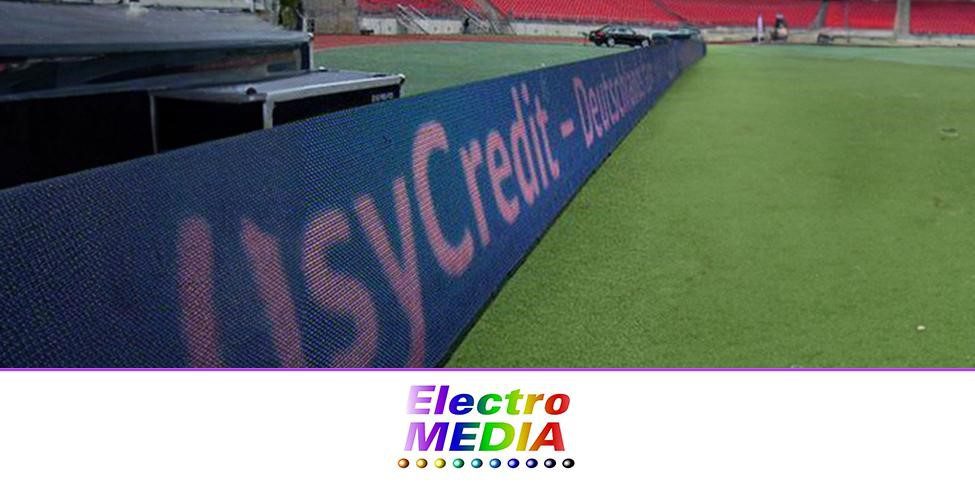
Cutting-edge LED display technologies for sports arenas are set to revolutionize the industry. MicroLED screens deliver top-notch visuals and flexibility, transparent displays seamlessly blend with venue design, and holographic screens offer mesmerizing 3D images for enhanced storytelling.
Biometric integration allows for personalized content delivery tailored to fan preferences, while blockchain-powered advertising guarantees transparency and security in transactions. Immersive audio solutions further enhance the overall sensory experience.
Potential Applications and Industry Outlook
Stadium perimeter LED display in sports arenas have numerous applications that can bring about significant changes. They enhance fan engagement with dynamic content and personalized experiences. They also create valuable advertising and sponsorship opportunities, generating revenue and increasing brand visibility.
Advanced analytics provide insights into fan behavior, optimizing marketing strategies, and maximizing ROI. LED displays also serve as versatile digital signage platforms for promoting events, providing wayfinding assistance, and delivering real-time updates. They contribute to venue utilization by hosting various events and fostering community engagement.
Maintenance and Support
Maintenance and support play a crucial role in guaranteeing the utmost efficiency of LED displays in sports arenas. Regular maintenance, encompassing cleaning and inspections, helps prevent problems and maintains a consistent level of performance. Dependable technical support services offer swift troubleshooting and resolution of technical issues.
Regular software updates ensure compatibility and provide access to the latest features. Implementing an emergency response plan helps minimize downtime during unforeseen events. Training the staff and keeping an inventory of spare parts ensure smooth operation and prompt repairs.
Routine Maintenance Practices
It is crucial to follow routine maintenance practices for LED displays in sports arenas. These practices involve regular cleaning using gentle materials, inspecting for any damage or dead pixels, ensuring proper ventilation and cooling, verifying a stable power supply, and regularly updating the software. Moreover, it is important to monitor the environmental conditions, maintain backups of configuration and content, and keep detailed records of all maintenance activities.
Troubleshooting and Technical Support
Resolving LED display problems in sports arenas requires recognizing signs, verifying connections, and troubleshooting software. Testing pixels assists in pinpointing defective components for substitution.
Remote support provides rapid analysis, whereas on-site maintenance tackles hardware or software problems efficiently. Keeping a stock of spare parts guarantees swift replacements as necessary. Thoroughly documenting troubleshooting steps assists in future guidance and instruction.
Conclusion
The fan experience has been completely transformed by the advancements in stadium perimeter LED display, providing captivating visuals, interactive elements, and profitable advertising prospects. As technology progresses, these displays will continue to play a crucial role in enhancing the thrill and grandeur of live sports events.
